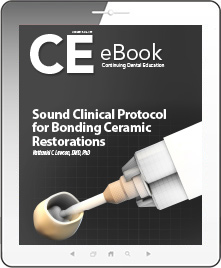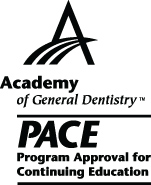CDEWorld > eBooks > Sound Clinical Protocol for Bonding Ceramic Restorations


ADA CERP is a service of the American Dental Association to assist dental professionals in identifying quality providers of continuing dental education. ADA CERP does not approve or endorse individual courses or instructors, nor does it imply acceptance of credit house by boards of dentistry. Concerns or complaints about a CE provider may be directed to the provider or to ADA CERP at www.ada.org/cerp/

Approved PACE Program Provider. FAGD/MAGD credit. Approval does not imply acceptance by a state or provincial board of dentistry, or AGD endorsement. 1/1/2023 to 12/31/2028. ID # 209722.
eBook
Released: Thursday, June 22, 2017
Expires: Thursday, April 30, 2020
Sound Clinical Protocol for Bonding Ceramic Restorations
By Nathaniel C. Lawson, DMD, PhD
Commercial Supporter: Essential Dental Systems
Ceramic materials have gained clinical preference, in part, because of their esthetic properties and reduced laboratory costs. However, perhaps the greatest clinical benefit of ceramic materials is that they are conducive to practicing more conservative dentistry. High-strength ceramics such as zirconia enable clinicians to prepare less tooth reduction. Conservation of tooth structure may be further achieved if the clinician chooses to bond the ceramic restoration. This article reviews sound clinical protocol for bonding ceramic restorations, including when to bond, steps for bonding zirconia and glass-based crowns, techniques for cleaning ceramics prior to bonding and the rationale for choosing different resin cements.
LEARNING OBJECTIVES:
- Discuss the clinical benefits of ceramic restorative materials.
- Explain how bonding ceramic restorations can enhance tooth structure conservation.
- Describe differences between glass-based ceramic restorations and zirconia restorations.
- Discuss attributions of resin cements used for bonding ceramic crowns.
About the Author
Nathaniel C. Lawson, DMD, PhD
Assistant Professor, Department of Clinical and Community Sciences, Division of Biomaterials, University of Alabama at Birmingham School of Dentistry, Birmingham, Alabama


